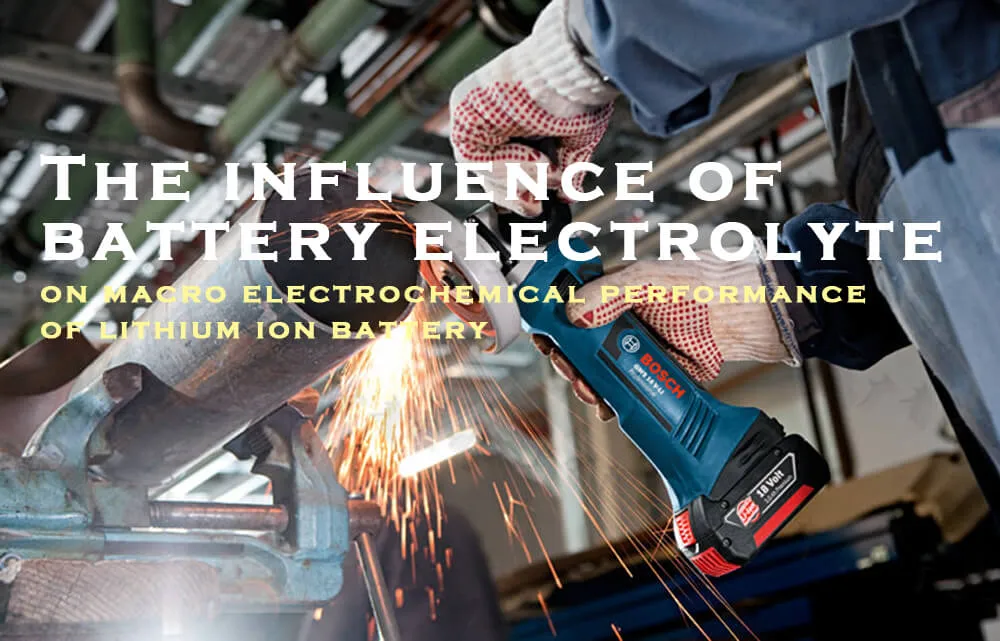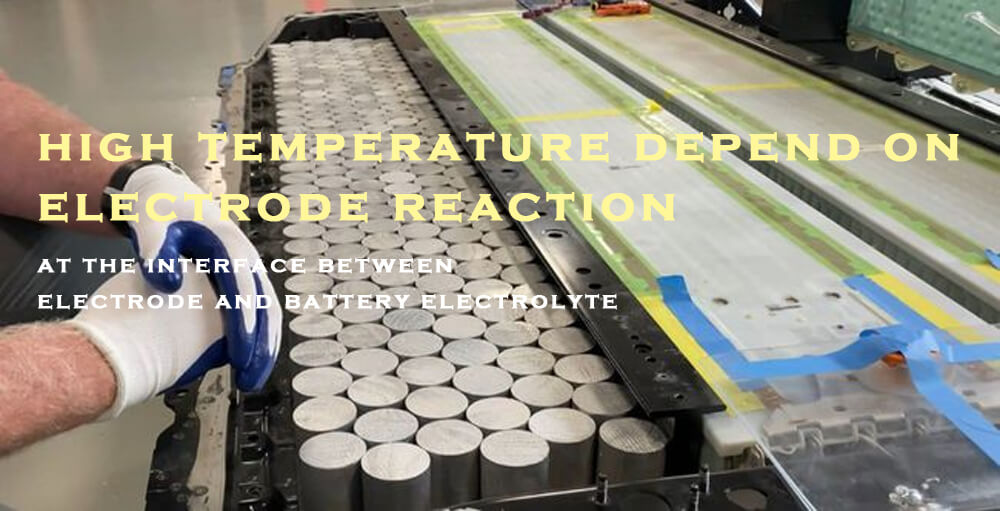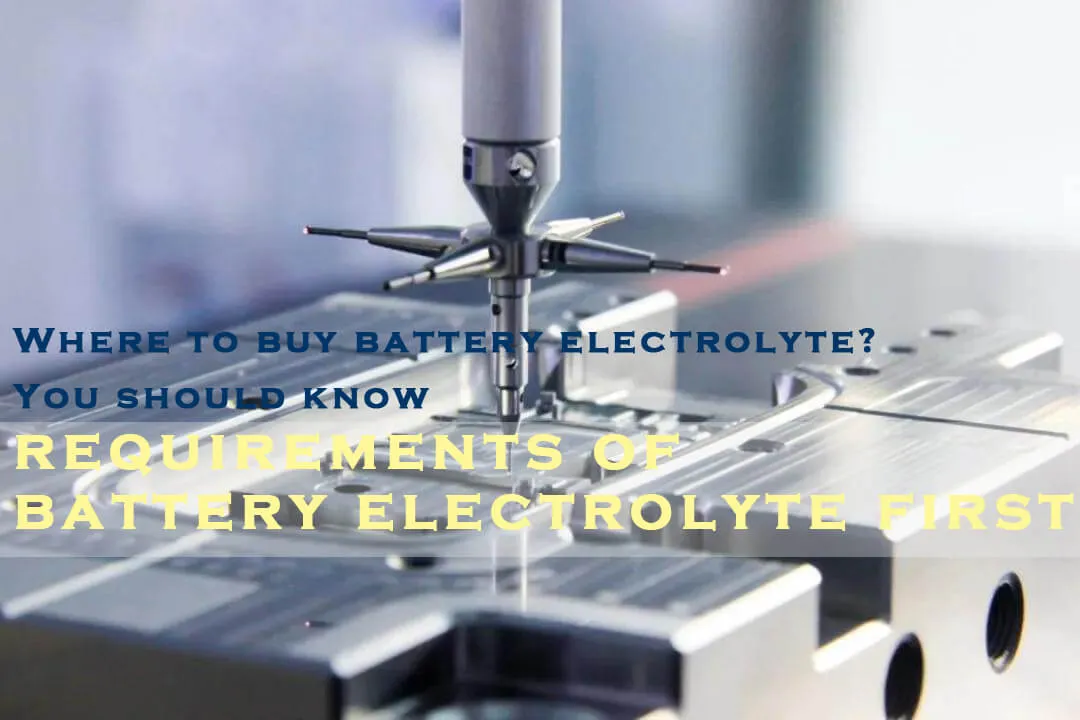Home » Battery Materials » Where to buy battery electrolyte?You should know requirements of battery electrolyte first
Where to buy battery electrolyte? You should know requirements of battery electrolyte first
Electrolyte plays an irreplaceable role in various electrochemical energy storage devices, especially in high energy density lithium battery. If you want to buy battery electrolyte, you first need to know what requirements electrolytes need to meet in order to achieve good performance of batteries.
- Basic requirements of battery electrolyte
- The classifications of lithium ion battery electrolyte
- The influence of battery electrolyte on battery performance
- Impact on battery capacity
- Influence on battery internal resistance and rate charge-discharge performance
- Influence on the operating temperature range of the battery
- Influence on battery storage and cycle life
- The impact on battery safety
- Influence on battery self-discharge performance
- Influence on battery overcharge and overdischarge behavior
Basic requirements of battery electrolyte
The electrolyte used in lithium-ion battery should meet the following basic requirements, which are the factors that must be considered to measure the performance of electrolytes, and are also the important preconditions to achieve high performance, low internal resistance, low price, long life and safety of lithium-ion battery.
① High ionic conductivity over a wide temperature range and thus large number of lithium ion migrate,to reduce concentration polarization in the charging and discharging process of the battery
② Good thermal stability, to ensure that the battery operate in the appropriate temperature range.
③ Wide electrochemical window, preferably 0-5V electrochemical stability window to ensure that electrolyte at the poles do not occur significant side reactions, to meet the unicityof electrode reaction in the electrochemical process.
④ When the battery electrolytewas used instead of diaphragm , it should also has good mechanical properties and machinable performance.
⑤ Low cost of price
⑥ Highsafety, high flash point or no combustion.
⑦ No toxic pollution, no harm to the environment.
The classifications of lithium ion battery electrolyte
Lithium battery electrolyte can be divided into liquid electrolyte, solid electrolyte and solid-liquid compound electrolyte according to the existence state of electrolyte.
Liquid electrolyte includes organic liquid electrolyte and room temperature ionic liquid electrolyte.Solid electrolyte includes solid polymer electrolyte and inorganic solid electrolyte, and solid-liquid composite electrolyte is gel electrolyte composed of solid polymer and liquid electrolyte.
The basic properties of different battery electrolyte systems are compared in the table. It can be seen that different kinds of lithium ion battery electrolytes have their own advantages, but also have their own shortcomings.
| Properties/Types of battery electrolyte | Organic liquid electrolyte | Solid polymer electrolyte | Gel polymer electrolyte | Room temperature ionic liquid electrolyte | Inorganic solid electrolyte |
| State | Liquid | Solid | Quasi solid | Liquid | Solid |
| Matrix properties | Fluidity | Toughness | Toughness | Fluidity | Brittleness |
| Position of Li+ | Not fixed | Relative fixed | Relative fixed | Not fixed | Fixed |
| Concentration of Li+ | Lower | Higher | Lower | Lower | High |
| Conductivity | High | Lower | Higher | Higher | Lower |
| Safety | Inflammable | High | Higher | High | High |
| Price | Higher | Higher | Higher | High | Lower |
Organic liquid electrolyte
Electrolytes obtained by dissolving lithium electrolyte in polar aprotic organic solvent, this kind of battery electrolyte have good electrochemical stability, low freezing point and high boiling point, and can be used in a wide temperature range.
However, organic solvents have low dielectric constant, high viscosity, poor ability to dissolve inorganic salt electrolytes, low conductivity, and are particularly sensitive to trace water.
Organic liquid lithium battery is easy to leak, the product must use a solid metal shell, the model size is fixed and lack of flexibility. The flammability of organic solvent causes its poor safety, the battery protection measures must be very perfect.
Room temperature ionic liquid electrolyte
A functional material or medium composed of specific cations and anions that is liquid at room temperature or near room temperature has outstanding advantages such as high conductivity, low vapor pressure, wide liquid range, good chemical and electrochemical stability, no pollution and easy recovery.
Room temperature molten salt can be used as lithium ion battery electrolyte to improve the safety of the battery under high power density and completely eliminate the potential safety hazard of the battery.
Thus making the application of lithium battery in large power systems such as electric vehicles or other special conditions possible .
Solid polymer electrolyte
With incombustible, low reactivity between electrode material and better toughness, solid polymer battery electrolyte can overcome liquid lithium ion battery of the above shortcomings:
Allows the volume change of the electrode material discharge process, more than the liquid electrolyte resistance to shock, vibration and deformation, easy to processing molding. It can make different shapes according to different needs of the battery.
Gel electrolyte
Liquid plasticizers such as PC EC, were introduced into the polymer matrix to obtain a solid-liquid composite gel electrolyte. The ternary battery electrolyte composed of lithium polymer compound and polar organic solvent has the properties of both solid electrolyte and liquid electrolyte.
Inorganic solid electrolyte
Inorganic solid electrolyte is a solid material with high ionic conductivity. It can be divided into glass electrolyte and ceramic electrolyte for all-solid lithium ion battery. Solid electrolyte not only acts as an battery electrolyte, but also can replace the diaphragm in the battery.
Therefore, the use of the preparation of inorganic solid electrolyte solid-state lithium batteries don’t have to worry about leakage problem, batteries can be miniaturized and miniaturized.
Although in this kind of material, the number of migration lithium ion is big, but the electrical conductivity of the electrolyte itself much more smaller than liquid electrolyte.
This material has the highest interface impedance to the electric material for the lithium-ion battery. Moreover, the inorganic solid electrolyte is extremely brittle, making the lithium-ion battery with the electrolyte poor seismic performance
The influence of battery electrolyte on battery performance
The influence of battery electrolyte on macro electrochemical performance of lithium ion battery includes the following aspects:
Impact on battery capacity
Although the electrode material of lithium ion battery specific capacity is a prerequisite for, but battery electrolyte also largely affect the electrolyte irreversible capacity of electrode materials.
This is because the intercalation and circulation of the electrode materials always interact with the electrolyte, and this interaction has an important influence on the interface state and internal structure of the electrode materials
In the working process of lithium ion battery, in addition to the redox reactions occurring at the cathode and anode when lithium ions are embedded and removed.
There are also a large number of side reactions, such as the oxidation and reduction decomposition of electrolytes on the cathode and anode, the surface passivation of active substances on the electrode, and the high interface impedance between electrode and electrolyte.
All these factors affect the capacity of electrode materials to varying degrees. Therefore, some battery electrolyte systems can make electrode materials show excellent capacity of embedding and delithium, while some electrolyte systems have great damage to electrode materials.
Influence on battery internal resistance and rate charge-discharge performance
Internal resistance refers to the resistance of the current through the battery, including ohmic internal resistance and the polarization resistance of the electrode in the electrochemical process.
For lithium ion batteries, the internal resistance should also include the interface resistance between the electrode and electrolyte.
Therefore, the sum of ohm internal resistance, electrode/electrolyte interface resistance and polarization internal resistance is the total internal resistance of lithium ion battery, which is an important index to measure the performance of chemical power supply, and directly affects the battery working voltage, working current, output energy and power.
The ohmic resistance of the battery is mainly due to the conductivity of the battery electrolyte, but also includes the resistance of the electrode material and the diaphragm.
The conductive mechanism of the electrolyte part is ionic conduction, and the resistance of the conductive process is usually much greater than that of the electronic part. The interface resistance between electrode and electrolyte plays an important role in lithium ion battery.
The greater the resistance of lithium ion crossing the interface, the higher the internal resistance of the battery. In general, the interfacial resistance is significantly higher than the ohmic resistance.
Lithium ion batteries, lithium ion layer and delaminating are embedded in the electrode and electrolyte phase interface. How easily this reaction can take place, the degree of electrochemical polarization, depends not only on the nature of the electrode material.
It is also related to the interface state of electrolyte and electrode material, the existence state of lithium ion in electrolyte and the interaction between lithium ion and battery electrolyte. In this sense, the nature of electrolyte system also affects the polarization resistance of battery to a certain extent
Rate charging-discharge performance is an important index to measure the capacity retention ability of lithium ion batteries under rapid charging-discharge conditions.
The rate charge-discharge performance of the battery depends on the mobility of lithium ion in the electrode material, the conductivity of battery electrolyte and the mobility of lithium ion at the electrode/electrolyte phase interface, the latter two are closely related to the composition and properties of electrolyte.
Influence on the operating temperature range of the battery
Due to the high temperature dependence of electrode reaction at the interface between electrode and battery electrolyte, temperature has the most obvious influence on battery performance among all environmental factors.
Under low temperature conditions, the electrode reaction rate decreases, and even stops, the performance of the battery is significantly reduced, and even cannot be used normally.
When the temperature is raised, the electrode reaction is intensified, but the side reaction of electrode/electrolyte interface is also intensified, which often has great damage to the battery, and the performance of the battery is affected.
Therefore, the best working temperature of the battery should be the temperature that is most conducive to electrode reaction without obvious side reaction.
The operating temperature range of liquid lithium ion battery is usually -10-45℃. The lowest operating temperature is generally not less than -20 ℃, the highest operating temperature is generally not more than 60 ℃.
For lithium-ion batteries with liquid electrolyte, the main way to expand the working temperature range is to expand the liquid path of electrolyte, improve the conductivity and stability of electrolyte at low temperature and high temperature.
For solid electrolytes, to expand the operating temperature range, it is necessary to improve the conductivity of the electrolyte at room temperature or even low temperature and reduce the interfacial impedance between the electrolyte and the electrode material.
Influence on battery storage and cycle life
The aging of lithium ion batteries in the long-term storage process is the key to affect the storage performance of batteries. Even if a commercial lithium ion battery is never used, its storage life is only about 3 years.
The reason of battery aging is various, including electrode set fluid corrosion and electrode active material from a collection of fluid loss.
And loss of electrochemical activity is the main reason, and the nature of battery electrolyte and fluid corrosion and the stability of the electrode material in which are closely related. Therefore, electrolyte affects and even determines the battery storage life to a large extent
Cycle life is an important index to evaluate the quality of secondary battery, which is generally measured by the cycle times when the battery capacity is reduced to a certain value.
There are many factors affecting the cycle life of lithium ion batteries, including the stability of electrode materials, electrolyte stability, charge and discharge rate, charge and discharge depth and temperature, etc.
For lithium-ion batteries, in addition to correct use and maintenance, there are mainly the following reasons for the short battery cycle life:
① The active surface of the electrode active substance in the charging and discharging process continues to decrease, the real current density of the battery increases, and the internal resistance of the battery increases gradually.
② The active substance of the electrode collector fluid falls off or transfers and loses its due electrochemical activity.
③ Some materials may age or corrode in the electrolyte during battery operation.
④ Damaged or partially closed diaphragm.
⑤ Impurities in the battery electrolyte due to gaseous or reductive reaction of solution at the electrode interface.
Due to the influence of the above factors, the normal service life of lithium ion batteries is about 2-3 years at present, and the above factors are mostly related to the properties of battery electrolytes.
The impact on battery safety
Lithium ion battery replaces the dissolution and deposition of lithium metal in the traditional lithium secondary battery by the mechanism of internal lithium storage in the lattice.
Which eliminates the growth of dendrite lithium on the anode surface and reduces the chance of battery short circuit, but it does not fundamentally eliminate the potential safety hazard of battery.
For example, lithium metal deposition will also occur on the surface of the anode of liquid lithium ion battery under the condition of overcharging, while electrolyte oxidation decomposition will occur on the surface of the cathode electrode under the condition of high potential, and a series of unsafe side reactions will occur in the battery.
In addition, the large amount of heat generated by the battery in the case of high current charging and discharging cannot be dissipated in time, resulting in a rapid rise in the temperature of the battery, which will also bring significant safety problems to the battery.
Although the stability of electrode material, composition of battery electrolyte and the manufacturing process and use conditions of the battery itself are the main factors affecting the lithium-ion battery safety.
But the root of the safety problem of liquid lithium ion battery is still the volatile nature and high flammability of organic liquid electrolyte. Therefore, the research on the safety of liquid lithium ion battery mainly focuses on the reaction between electrode material and electrolyte and its thermal effect.
These studies deepen people’s understanding of a series of exothermal reaction and combustion mechanism in lithium ion battery.
However, in order to fundamentally eliminate the potential safety hazard of batteries, it is necessary to eliminate the combustibility of organic solvents and develop safer or non-combustion electrolyte systems, especially for large and high-power density lithium-ion batteries.
Influence on battery self-discharge performance
The self-discharge rate of lithium ion battery depends on the type and structure of electrode material, the interface properties of electrode/electrolyte, the composition of electrolyte and the production process of the battery.
The main reasons for self-discharge of lithium ion batteries are as follows:
① Self-discharge of the anode.
The self-discharge of the anode is mainly caused by the release of lithium from the anode in the form of Li+ or into the battery electrolyte, and its rate depends on the surface condition and surface catalytic activity of the anode.
The surface condition of the anode is obviously affected by battery electrolyte, so the self-discharge rate of the battery can be reduced by optimizing the composition of electrolyte
② Self-discharge of cathode.
Refers to that lithium ions in battery electrolyte are embedded into the lattice of cathodematerial, thus causing cathodeself-discharge. The rate depends on the dynamic factors of Li+ embedded in the cathode, mainly the interface properties of the cathode/electrolyte.
In addition, the appearance of impurities in the battery electrolyte is also an important cause of battery self-discharge, because the oxidation potential of impurities is generally lower than the cathode potential of lithium ion battery, easy to oxidize on the surface of the cathode electrode.
The oxide will be reduced in the anode, so as to constantly consume the active substances of the cathode and anode materials, causing self-discharge. Therefore, lithium-ion batteries have high requirements on electrolyte composition and purity.
Influence on battery overcharge and overdischarge behavior
Because the electrolyte of lithium ion battery cannot provide protection against overcharge or overdischarge during normal operation of the battery, the ability of the battery against overcharge and overdischarge is very poor.
However, in some practical application conditions, when multiple lithium-ion batteries are used in series to obtain a higher voltage, there is often an obvious capacity mismatch phenomenon.
And there will always be some batteries overcharge when charging, and some batteries overdischarge when discharging. On the one hand, it causes irreversible damage to the battery performance and affects the life of the battery pack. At the same time, it also brings obvious safety risks to the battery.
The modification of battery electrolyte is an important way to prevent overcharge and discharge of batteries. More research is done to establish an internal overcharge and discharge protection mechanism in organic liquid electrolyte.
For example, the addition of a redox shuttle pair to the electrolyte, which is oxidized at the cathode under overcharge conditions, reduces the oxidizer to the anode surface, thus avoiding a continuous increase in battery voltage.


























